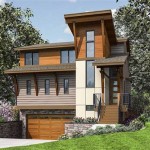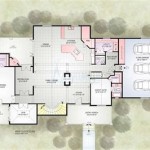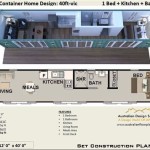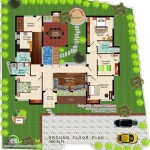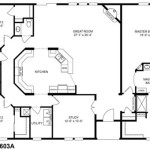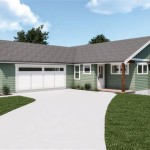A-Frame Tiny Home Plans: Design, Functionality, and Considerations
A-frame tiny homes represent a compelling architectural solution for minimalist living and sustainable housing. These structures, characterized by their steeply angled, triangular shape, offer a unique blend of aesthetic appeal, structural efficiency, and adaptability to various environments. The inherent simplicity of the A-frame design makes it a popular choice for both DIY builders and those seeking professionally constructed tiny homes. Understanding the nuances of A-frame tiny home plans is crucial for realizing a successful and functional living space.
The selection of a suitable A-frame tiny home plan is a multifaceted process involving considerations of size, layout, material selection, and local building codes. A poorly chosen or inadequately adapted plan can lead to structural issues, discomfort, and potential regulatory violations. Conversely, a well-executed plan can result in a comfortable, energy-efficient, and legally compliant tiny home that meets the specific needs and preferences of its occupants.
Key Considerations in A-Frame Tiny Home Plan Selection
Several critical factors must be evaluated when selecting or designing an A-frame tiny home plan. These include the intended use of the home, the site conditions, budgetary constraints, and individual lifestyle requirements. Prioritizing these factors ensures that the final structure is both aesthetically pleasing and functionally effective.
The intended use of the tiny home significantly influences the floor plan and amenities required. A weekend retreat intended for occasional use will have different needs than a full-time residence. For example, a permanent dwelling may necessitate a larger kitchen, dedicated workspace, and more robust insulation compared to a vacation cabin. Determining the primary function of the home early in the planning process allows for targeted design decisions that maximize usability and minimize unnecessary costs.
Site conditions, including climate, topography, and soil composition, also dictate specific design adaptations. Regions with heavy snowfall require steeper roof pitches to prevent excessive snow accumulation, while areas prone to high winds may necessitate reinforced structural elements. Soil testing is essential to determine the appropriate foundation type, whether it be a concrete slab, pier and beam system, or trailer-mounted chassis. Adapting the plan to the unique characteristics of the building site ensures structural integrity and long-term durability.
Budgetary constraints inevitably play a pivotal role in shaping the scope and complexity of the A-frame tiny home plan. Material selection, labor costs, and permitting fees can vary significantly depending on the project's scale and location. A realistic budget assessment should account for both anticipated expenses and potential unforeseen costs. Value engineering, which involves optimizing the design to reduce costs without compromising quality or functionality, is a critical skill for managing expenses effectively. This might include using locally sourced materials, simplifying the structural design, or performing some of the construction tasks oneself.
Finally, individual lifestyle requirements should be integrated into the design to create a comfortable and personalized living space. Considerations such as the number of occupants, the need for privacy, storage requirements, and accessibility concerns should all be addressed in the floor plan. For example, individuals who work from home may require a dedicated office space, while those with mobility limitations may need wider doorways and a ground-floor bedroom. Customizing the plan to reflect the specific needs and preferences of the occupants ensures that the tiny home is both functional and enjoyable to live in.
Essential Elements of A-Frame Tiny Home Plans
A comprehensive A-frame tiny home plan encompasses a variety of detailed drawings and specifications that guide the construction process. These typically include architectural drawings, structural drawings, mechanical, electrical, and plumbing (MEP) plans, and a materials list. Each element plays a crucial role in ensuring the structural integrity, functionality, and safety of the completed home.
Architectural drawings provide a visual representation of the finished structure, including floor plans, elevations, and sectional views. These drawings illustrate the layout of rooms, the placement of windows and doors, and the overall aesthetic design of the home. Floor plans are particularly important, as they determine the flow of traffic, the allocation of space, and the functionality of each room. Elevations show the exterior appearance of the home from different angles, while sectional views provide a cutaway perspective of the internal structure.
Structural drawings detail the load-bearing elements of the A-frame, including the foundation, framing, roof, and walls. These drawings specify the dimensions, materials, and connection details of each structural component, ensuring that the home can withstand anticipated loads from wind, snow, and seismic activity. A qualified structural engineer typically prepares these drawings, ensuring compliance with local building codes and standards. Accurate structural drawings are essential for the safety and longevity of the A-frame tiny home.
MEP plans outline the layout of the electrical, plumbing, and HVAC systems within the home. Electrical plans show the location of outlets, switches, lighting fixtures, and the main electrical panel, along with wiring diagrams and specifications for each component. Plumbing plans detail the routing of water supply lines, drain lines, and waste disposal systems, including the location of fixtures, valves, and cleanouts. HVAC plans specify the type and location of heating, ventilation, and air conditioning equipment, along with ductwork and ventilation strategies. These plans ensure that the home has adequate power, water, and climate control, while also complying with safety regulations.
A materials list provides a comprehensive inventory of all materials required for the construction of the A-frame tiny home, including lumber, roofing materials, siding, insulation, windows, doors, fasteners, and finishes. The list specifies the quantity, size, and type of each material, allowing builders to accurately estimate costs and procure the necessary supplies. A well-organized materials list can help to streamline the construction process and minimize waste. It is crucial to accurately estimate quantities to avoid delays or cost overruns due to material shortages.
Adapting Stock A-Frame Tiny Home Plans
While numerous pre-designed A-frame tiny home plans are available for purchase, customization is often necessary to align the plan with specific site conditions, budget constraints, and personal preferences. Adapting a stock plan can be a cost-effective alternative to designing a custom home from scratch, but it requires careful consideration and attention to detail.
One common adaptation involves modifying the foundation to suit the specific soil conditions and terrain of the building site. For example, a plan designed for a level site with stable soil may need to be adapted for a sloping site or an area with poor soil bearing capacity. This might involve using a pier and beam foundation, a retaining wall, or soil stabilization techniques. A geotechnical engineer can provide valuable insights into soil conditions and recommend appropriate foundation modifications.
Another frequent adaptation involves adjusting the floor plan to accommodate different lifestyle needs. This might include adding or removing walls, relocating doors or windows, or reconfiguring room sizes. When modifying the floor plan, it is important to consider the impact on structural integrity and the flow of traffic within the home. Load-bearing walls should not be removed or altered without consulting a structural engineer. It is also important to ensure that the modified floor plan complies with accessibility requirements and building codes.
Adapting the exterior design of the A-frame can also enhance its aesthetic appeal and improve its performance in specific climates. This might involve changing the roof pitch, adding dormers or skylights, or selecting different siding materials. A steeper roof pitch can improve snow shedding in regions with heavy snowfall, while dormers can increase headroom in the upper level of the home. The choice of siding materials should be based on both aesthetic considerations and durability in the local climate. For instance, wood siding may require more maintenance in humid climates, while metal siding may be more resistant to fire damage.
Finally, it is crucial to ensure that any modifications to the A-frame tiny home plan comply with local building codes and regulations. This may involve submitting the modified plans to the local building department for review and approval, obtaining the necessary permits, and scheduling inspections throughout the construction process. Failure to comply with building codes can result in fines, delays, or even the rejection of the completed home. Consulting with a local building official or architect can help to ensure that the modified plan meets all applicable requirements.
Selecting and adapting A-frame tiny house plans requires a methodical approach, considering intended use, site conditions, budgetary limits, and personal preferences. A comprehensive understanding of plan elements, adaptation strategies, and regulatory compliance ensures a successful and satisfying tiny home experience.

12 Modern A Frame Cabin Plans Homes Tiny Houses Craft Mart

Pin Page

Top 10 A Frame House Plan Drawings For Builders 2024

How To Build This A Frame Cabin That Will Pay For Itself Hipcamp Journal

Tiny A Frame Cabin Diy Plans 12 X 18 Home Blueprint

A Frame House Plans Small Cabins Modern Luxury Designs

12 Modern A Frame Cabin Plans Homes Tiny Houses Craft Mart

24 X A Frame Cabin Plan Project Small House

Cozy Winter Cabins A Frame House Plans And More Houseplans Blog Com

Cool A Frame Tiny House Plans Plus Cabins And Sheds

